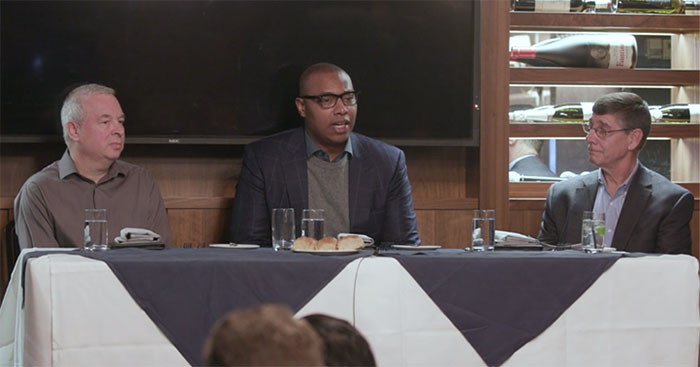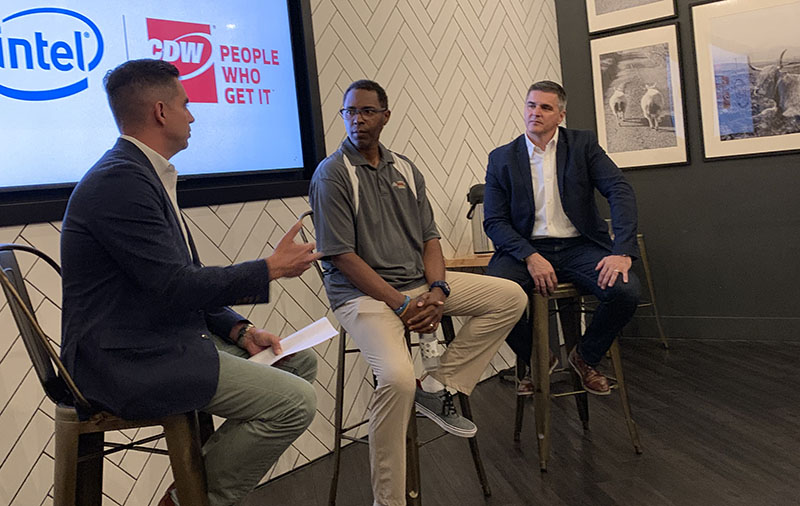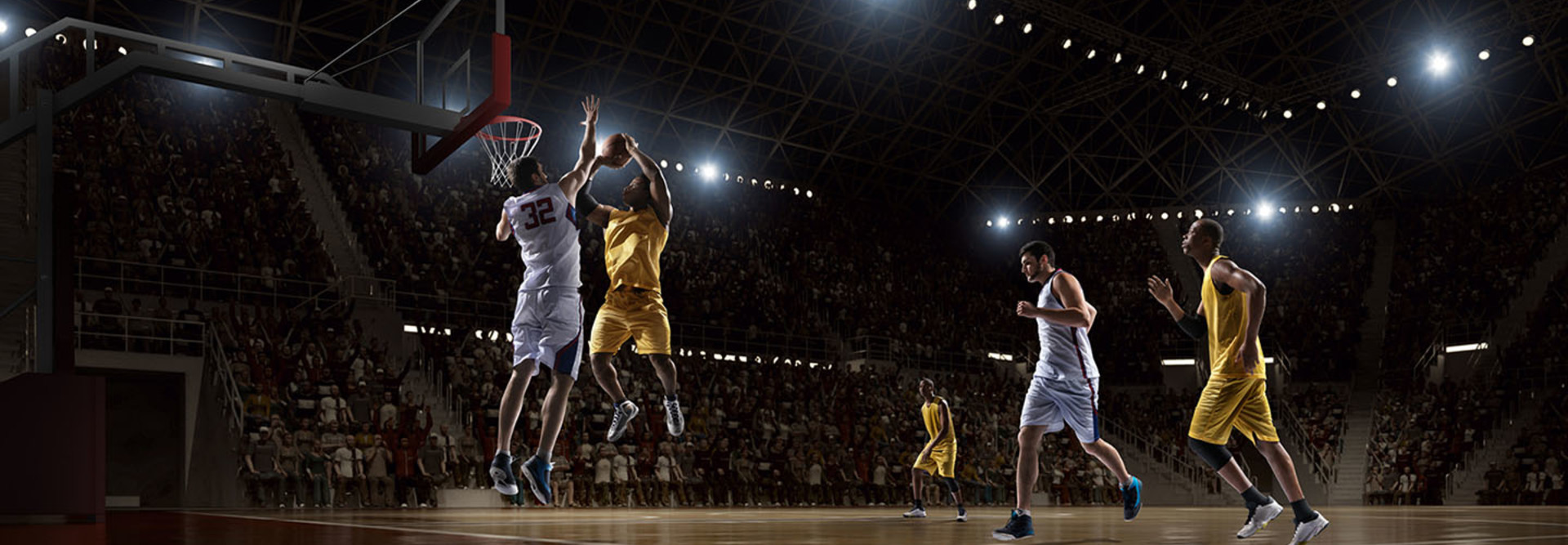After a professional career in the NBA that spanned 14 years and nine teams, you’d think that there’d be very little that could impress Caron Butler. But when it comes to technology, he finds himself continuously stunned by the level of invention and innovation coming to life and being applied to professional sports.
“I'm amazed by the technology,” said Butler, speaking as part of a CDW-Intel panel in Hartford, Conn., during the first round of March Madness.
In particular, he’s wowed by what is available to current players, which he has a close-up view of since retiring last year and transitioning to a new role as an NBA commentator for TNT. Compared with what was available to him as a player in the league, Butler is amazed.
“I remember calling a game with TNT and being on the sidelines, and I remember that we [as players back then] had clipboards. Coach would come and show us something and he would break it,” said Butler. “But now, all of the guys have iPads behind their seats, so they pull ’em out and they AirDrop all of their bad shots, all their good shots or whatever they feel like they need to see.”
Tablets, which have become an essential coaching tool in both football and basketball, are only the beginning. Many leagues are deploying advanced data analytics, high-end camera technology for tracking, and stadiumwide upgrades to support new digital signage or wireless networking innovation.
“Technology, as it’s a disruptor in other areas, in sports it’s now become a major disruptor as well,” said Frank Debello, a senior account executive for Intel who also spoke at the Hartford panel.

Caron Butler (middle) spoke as part of a thought leadership panel on sports and technology sponsored by CDW and Intel in Hartford, Conn. during the first round of the March Madness tournament. Photography by: Ricky Ribeiro
How Players React to and Perform with Technology
While the prospect of integrating innovative technology with sports usually draws applause from those on the tech side of things, some players are resistant to geeks imposing on their day-to-day routine.
As a new board member of the National Basketball Retired Players Association, Butler is getting used to negotiating with players when it comes to embracing technology and change. “I would say this, being on the board of directors now, we present a lot of things to the athletes in the association,” said Butler. “They're not so used to receiving new things. They're creatures of habit. They don't want to mess up the routine.”
That change in routine is most acute for those who played professionally before the digital era. Charlie Ward, a sports unicorn if there ever was one, whose claim to fame is being the only Heisman Trophy-winning college football player who then went on to a professional basketball career, reflected on how technology changes what players can get away with.
“I’m glad they didn’t have cameras back then. I was that guy who played on the edge, and there are a lot of things they can’t do today that I got away with,” said Ward with a laugh while speaking as part of another CDW-Intel panel during the first round of the NCAA Men’s Basketball Tournament in Jacksonville, Fla.
Much is made of the fact that technology now allows for precise player tracking. In the NBA, that means having real-time access to analytics that measure shots taken, shots missed, the arc of a player’s shot and so much more. And while that data is incredibly helpful, technologists and athletes caution it doesn’t tell the whole story.
“Statistics and analytics are probabilities. You need to factor in the human element,” said Debello.
Butler said that players can have any number of variables that make them perform differently from their statistical averages and patterns. Humans, after all, aren’t robots. And when players tap into something powerful or feel out of whack, they can have what he calls an “out-of-body experience.”
“It's tricky, but it's one of those things that you just have to gauge while watching it,” said Butler.

Charlie Ward (middle) and Juan Tobón (right) spoke as part of a thought leadership panel on sports and technology sponsored by CDW and Intel in Jacksonville, Fla. during the first round of the March Madness tournament. Photography by: Ricky Ribeiro
Opening New Frontiers in Sports with Advanced Technology
Intel is a company that is synonymous with the birth of the computing industry. The company was founded by Gordon Moore, whose predictions about the pace of innovation in technology became known as Moore’s law. This history of invention and innovation is driving Intel to take bold steps when it comes to the sports industry.
“We see technology completely different today than what we used to see. Before, it used to be a device — hardware; but now it's a combined device with hardware, software and analytics together in one group,” said Juan Tobón, an account executive for Intel, who spoke on the CDW-Intel panel in Jacksonville.
In particular, Intel is bullish about vPro, a platform that promises agility, security and innovation all in one.
“With this platform, coaches and countries with the Olympic teams can feel secure having this technology next to them because they know it's not going to be hacked,” said Tobón. “For the 2020 Olympics, teams are going to be able to use those sensors, and vPro will be essential to that security.”
In addition to vPro, Intel is also working on IoT applications for the 2020 Olympic Games, which are set to take place in Tokyo. Visual technology is also a key part of how Intel plans to transform the games.
“We are creating new products for the Olympics: a new 3D virtual sensor for the body, which will create different 360-degree motions during the performance,” said Tobón.
MORE FROM BIZTECH: Digital Transformation Starts with the Data Center
While the bleeding-edge tech, such as virtual sensors and IoT, generate excitement, some of the more meaningful innovations in sports technology are practical. Debello described how Intel recently helped the NFL significantly reduce the time it spends generating its schedule.
“The NFL called us to do their scheduling every year. It's a very complex algorithm that they use because if a team's playing on Thursday, you can't play on Sunday; if you're playing at MetLife Stadium, the Giants and the Jets can't play at the same time,” he explained.
“Every time they had to change a permutation and redo those numbers, it literally took 3 or 4 days to do that. So the person who did that schedule called me and said, ‘Frank, we need firepower. We need some big iron hardware. Can you help us?’”
The result: Intel secured five large servers to run this data for the NFL, and they were able to cut the processing time down from days to hours.
This is the type of example of a partnership between technology and sports that makes Butler optimistic about the future.
“I just think that the game is really benefitting from really, really smart people, and I'm happy that people are working for us to make our jobs a lot easier,” he said.












